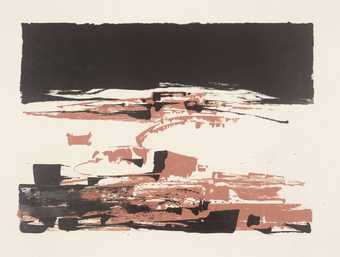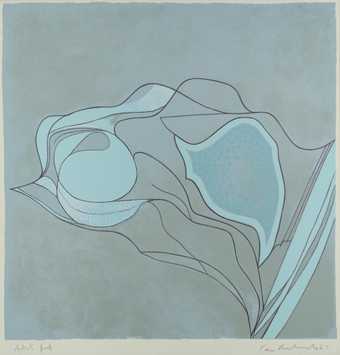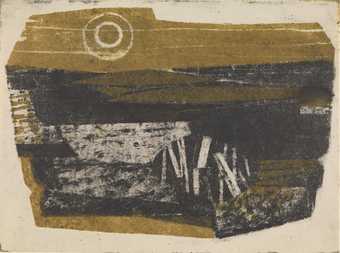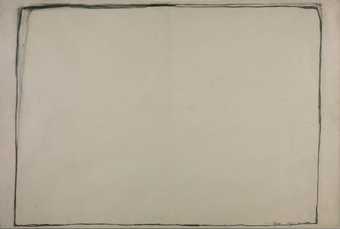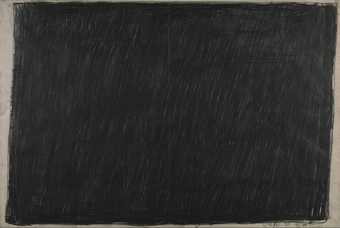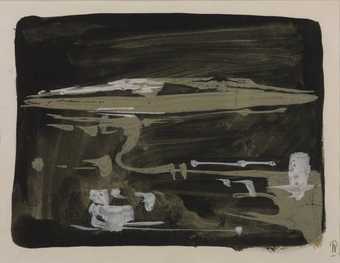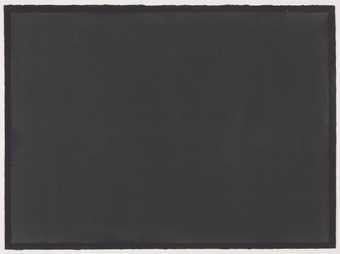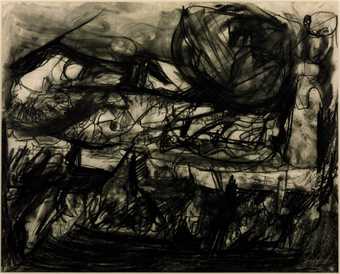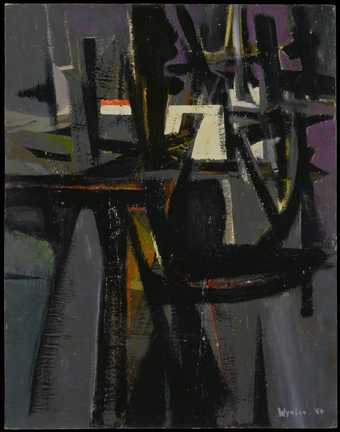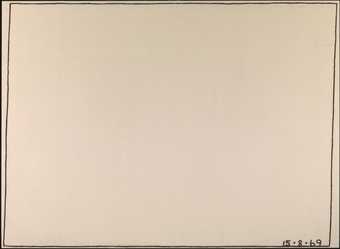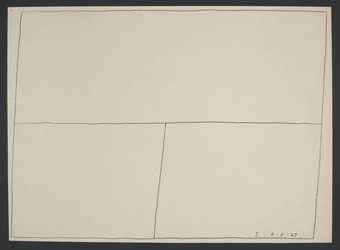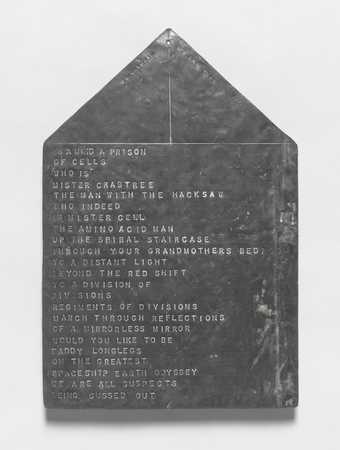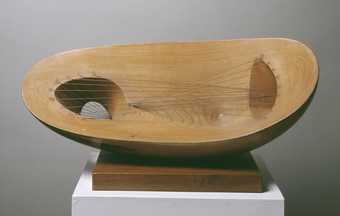
Not on display
- Artist
- Bob Law 1934–2004
- Medium
- Crayon on paper
- Dimensions
- Frame: 395 × 485 × 22 mm
- Collection
- Tate
- Acquisition
- Purchased 2010
- Reference
- T13318
Summary
Landscape VIII 1959 consists of a rough delineation of the outline of a rectangle that has been drawn in crayon relatively close to the margin of the paper. Along the upper and lower sides of this outline the artist has drawn a repeated motif of a pyramid or dog’s tooth pattern which extends from the line to the edge of the paper. Correspondingly, along the left and right sides of the outline, is a simple schematic drawing for a tree consisting of a line and a circle (in all except two of these ‘trees’ the line bisects the circle), that has been similarly repeated. The drawing suggests an image of a field enclosed by trees and hedgerows. Along the bottom line of the rectangle, ranged to the right, the artist has written the work’s title, his signature and the date: ‘Landscape VIII Law 20.11.59’. The top right hand corner of the sheet of paper has been torn to render the sheet irregular.
The artist has recounted how he made this and related drawings when he was living in Cornwall between 1957 and 1960. Either lying down in a field, or sitting in it, he would draw intensely, maybe making up to sixty drawings in a day. He would later destroy the majority of these, retaining only a very few that might embody the sense of revelation he wanted for his work. By situating himself within the motif that he was drawing – a field – his intention was not just to depict nature but also to embody a sense of discovery concerning his connection to nature:
The early Field drawings were about the position of myself on the face of the earth and the environmental conditions around me: the position of the sun, the moon and the stars, the direction of the wind, the way in which the trees grew, an awareness of nature’s elements, an awareness of nature itself and my position in nature on earth in a particular position in time. I was finding myself, and the map that went with myself. I was transcribing it graphically into charts.
(Quoted in ‘Bob Law in conversation with Richard Cork, April 1974’, in Bob Law, 2010, p.33.)
Much of Law’s subsequent work stems from the small group of extant drawings from 1959 which includes Landscape VIII. A recurrent theme is the formal device of the outline of a rectangle or rhombus drawn close to the edge of the paper or canvas. The field can be open, where the interior space of the geometric shape is left untouched, or it can be closed, where it is shaded or painted in. Another characteristic is the inscription of the date, which signifies the passage of time but also holds special fascination for the artist in the magical pattern of numbers. These field drawings are images of nothing and something: the presence and experience of a living being in the world. Law was attracted to Zen philosophy and during this time he read extensively, concentrating on psychology, mysticism, philosophy, palaeontology and poetry, and was immersed in the writing of the late nineteenth-century nature mystic Richard Jefferies (1848–1887). Much of the result of this reading was expressed in his lecture, ‘The Necessity for Magic in Art’, given in 1964 at Sussex University, in which he wrote that:
Man could not then, and still cannot to a lesser extent, bear the idea of something unknown and infinite – everything it seems must have a source, must have a system which he can come to grips with. A way of enabling himself to come to terms with the unknown is to make drawings – diagrams – sculpture. In this way he is able to draw out from the depths of his imagination the thoughts and ideas by making them into something real or tangible.
(Whitechapel Art Gallery 1978, unpaginated.)
Further reading
Bob Law: Paintings and Drawings 1959–78, exhibition catalogue, Whitechapel Art Gallery, London 1978.
Bob Law, Drawings, Sculpture and Paintings, exhibition catalogue, Newlyn Art Gallery 1999.
Richard Saltoun and Karsten Schubert (eds.), Bob Law, A Retrospective, London 2010.
Andrew Wilson
April 2010
Does this text contain inaccurate information or language that you feel we should improve or change? We would like to hear from you.
Explore
- abstraction(8,615)
-
- from recognisable sources(3,634)
-
- landscape(1,191)
- formal qualities(12,454)
-
- diagrammatic(799)
- UK cities, towns and villages(12,725)
-
- St Ives(167)
- England(19,202)
- inscriptions(6,664)
-
- title of work(308)
You might like
-
Michael Ayrton Greek Landscape I
1960–1 -
Ceri Richards Landscape
1967 -
Prunella Clough Geological Landscape
1949 -
Bob Law Drawing 24.4.60
1960 -
Bob Law Drawing 25.4.60
1960 -
Bob Law No. 62 (Black/Blue/Violet/Blue)
1967 -
Michael Ayrton Study for ‘Greek Landscape II’
1960 -
Bob Law Untitled 29.8.87
1987 -
Peter Lanyon Anticoli Hills
c.1953 -
Bryan Wynter Dark Landscape
1954 -
Bob Law Nothing to be Afraid Of IV 15.08.1969
1969 -
Bob Law Twentieth Century Ikon Series 8.8.67
1967 -
Bob Law Is a Mind a Prison
1970 -
Dame Barbara Hepworth Landscape Sculpture
1944 -
Sir Terry Frost Leeds Landscape
c.1956

